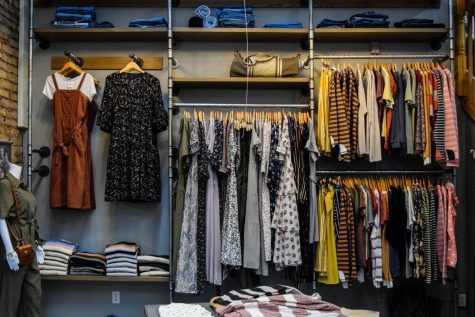Gender-neutral bathrooms would bring acceptance
May 17, 2016
In December 2015, one of Cherry Hill East High School’s faculty bathrooms got some new signage. The school, located in Cherry Hill, N.J., was the first in its district to implement a gender-neutral bathroom, according to the Courier Post’s Matt Flowers.
It’s not a new concept. Rutgers University has gender-neutral bathrooms at all three of its campuses in New Brunswick, Newark and Camden, according to the school’s website. Brown University, Carnegie Mellon University, Ithaca College, New York University and the University of Pennsylvania are just a few more colleges that give students access to these types of bathrooms, the College Equality Index reports.
CHS should be the next school on the growing list of educational facilities with gender-neutral bathroom. As an accepting and ever-changing community, and with far more girls in the school than boys, it would be a positive change for the administration to make the boys’ bathroom outside of room 101 into a gender-neutral bathroom.
As the name implies, gender-neutral bathrooms are not specified for “boys” or “girls,” “men” or “women.” News of transgender bathroom rights have made controversial headlines recently, most notably with Target’s bathroom policy welcoming transgender shoppers and employees to use the bathroom that aligns with their gender identity, according to an April USA Today article by Hadley Malcolm. The Obama administration “issued guidance” on May 13 for all public schools to allow transgender students to have this ability as well, CNN’s Emanuella Grinberg reported.
While we at the Inkblot applaud these progressive efforts, these policies still embrace the existence of only two genders. We are making strides in the transgender community, but we still fail to acknowledge our siblings who don’t fall under the umbrella of “boy” or “girl.” We’re forgetting those who are agender, genderfluid, gender neutral or, really, anyone who has any non-binary identity.
But on the same note, gender-neutral bathrooms don’t just apply to these non-binary students. Gender-neutral bathrooms apply to literally everyone, and that’s what makes them a great idea. This would, of course, come at the cost of a single boys’ bathroom, which currently has one stall and one urinal. This school year, CHS has 234 girls and 85 boys enrolled, according to school data, which means that girls comprise nearly three-quarters of the school. Changing the bathroom outside of room 101 takes nothing away from the two boys that can use that bathroom at a time; it just welcomes all – girls, transgender students, non-binary students – to use it.
And if that still makes you a bit uncomfortable, then here’s a challenge. Think of your typical family bathroom at any restaurant or retailer. There’s a sign on the front that says ‘family,’ there are maybe one or two stalls and anyone walks in and out as they please. Now, replace the word “family” with “gender-neutral,” and you’ve really got the same concept.
The only change needed in the boys’ bathroom is the removal of a urinal and the possible installation of a second stall. By highest estimates, the cost of installing a second bathroom stall is only about $2,000, according to Homewyse, an online house and home reference. After that, a unisex bathroom sign at Lowes costs $9.98. Surely, this isn’t pocket change, but it’s nothing the school couldn’t handle with a mere fundraiser or two. The CCC raked in over $3,000 just this year at their annual festival.
We at the Inkblot implore the administration to research and discuss the possibility of changing the boys’ bathroom outside of room 101 into a gender-neutral restroom. We are an accepting community and a diverse student body of many gender identities, and a gender-neutral bathroom would reaffirm this idea.








